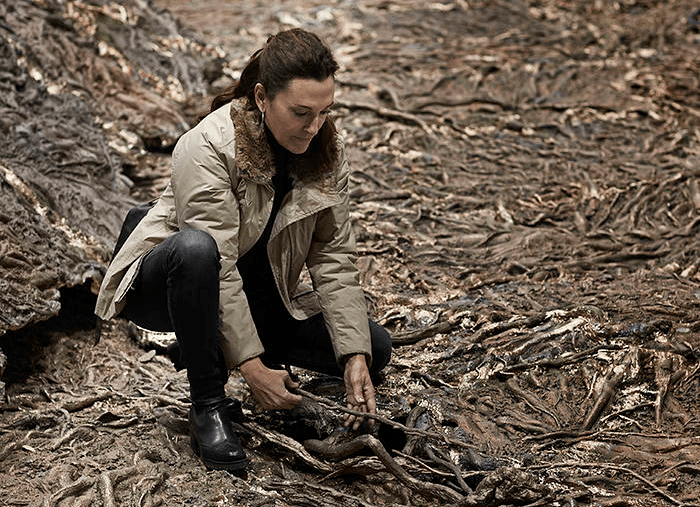This site uses cookies – Learn more.
Artist Statement: Cristina Iglesias
Artist Statement: Cristina Iglesias
Landscape and Memory
June 1 – December 4, 2022
Madison Square Park, New York
In my work, I have created refuges in cities and public spaces. Places of gathering for people to be
together or alone, to imagine or remember, and perhaps both.
I have developed work that concentrates on ideas of what might lie underneath us, of what might grow
rhizomatically around us, of underground waters that might still flow and ebb if unveiled, and I have asked
audiences to slow down and grant my work perhaps more time than what they are used to, looking at a
water sequence change.
The same city we experience at high-speed, can also offer us a place in which to slow down, reflect, listen, and encourage us to understand the intimate experience in a collective space.
For the Madison Square Park project, I started studying the geographic history of the Manhattan park, and the mapping of the area revealed that two bodies of water once ran under the park. The Cedar Creek and Minetta Brook, now forgotten, once coursed for two miles before flowing into the Hudson River.
I had already been working with geological landscapes in some of my recent permanent works, such as Inner Landscape (The Lithosphere, the Roots and the Water) at the Museum of Fine Arts in Houston, or Hondalea, in the lighthouse at the Santa Clara Island in San Sebastian, and Sea Cave (Entrance) in Malta International Contemporary Art Museum.
And though in many of my works there is a direct study and reference to the site they are conceived for, they also belong to a universal imagination of the land we all share, its profound depth, its memory, and the concept that two geographically distant places are in fact mentally connected. It is precisely this idea of connection that I used to create the fiction that activates the work Landscape and Memory at Madison Square Park.
Five bronze elements constitute the work, placed at different intervals around the park. Together they
draw the old course of the rivers that once flowed under what today is Manhattan. Where the waters once ran, now lies a mass of communication cables and infrastructure pipes, but also roots of trees, a vast network of fungi, and all types of living organisms connected amongst themselves. In this way, these five geometric openings reveal a bronze interior landscape, talking about the ancient and the eternal. Water flows continually through these bronze elements located below floor level, obliging our bodies to get closer to what lies underneath us. Reflective walls at each end of the rectangular shaped bronze spaces enable me to enhance the fiction that this water is indeed flowing from one space to the next. We have also planted between each bronze concavity a different type of grass, one that grows higher than the rest of the park’s extension, fictionalizing once more that the water is indeed running under that line and its humidity is becoming visible to the viewer. This suggested continuity of the water flow unites the five holes making us imagine the whole.
These five bronze elements compose a bas relief made up of invented rocks and roots, evoking an organic fictional nature creating the old riverbed. The contrast of fictional nature directly juxtaposed with the real landscape of the park activates in the audience’s view both a memory of what was and an imagination of what could be.
With this piece I wanted to make a work in which people could lay down, listen to the sound of water, and permit themselves to get lost in the details. Referencing the rivers that once passed by this place permits me to create a metaphor that can make the consciousness of the spectator flow. However, that awareness and imagination of what lies underneath us, under our constructed societies, could be equally activated anywhere on the planet.
Understanding geology as the memory of landscape, and in doing so encouraging audiences to create their own landscapes, their own memory of place, is something that I try to do with my work. I am interested in what lies underneath us, what might continue to grow outside of our view, and how this idea can activate the imaginary construction of space—the moment when a peripheral vision becomes acutely aware that our world is vastly larger than what our senses are able to register.
(Photo credit: Rashmi Gill)










